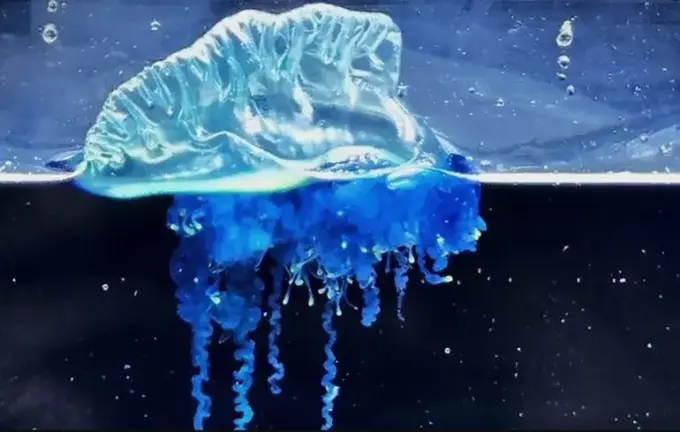Discovery of a New Portuguese Man-of-War Species off Japan’s Northeast Coast

A student research team has made a groundbreaking discovery in the waters off Japan’s northeast coast — the identification of a new species of Portuguese man-of-war, named Physalia mikazuki, meaning ‘crescent-shaped ship.’ This marine creature had never been observed in this part of the Pacific Ocean before, raising concerns about changing climate conditions and their impact on marine habitats.
Researcher Yoshiki Otiai, a member of the team, recounted that during a dive near Sendai Bay in the Tohoku region, he encountered an unusual jellyfish-like organism, quickly collected it, and brought it to the laboratory for analysis.
The species was later confirmed as a distinct new species after detailed morphological studies and DNA sequencing.
It was named in honor of the famous feudal lord Date Masamune, depicted with a crescent moon on his helmet, symbolizing the species’ name.
Scientists have also discovered that the region has been inhabited by this species from early times, previously mistaken for Physalia utriculus, which is known to occur from Okinawa to Sagamihara Bay.
Advanced genetic analysis and comparison of anatomical structures established that Physalia mikazuki is indeed a separate species that has been present in the area all along.
To understand how this species arrived so far north, researchers used computer modeling of ocean currents, especially the Kurushio current, which shifted approximately two degrees latitude during 2023–2024, likely transporting the species northward due to increased sea surface temperatures.
This unexpected spread prompts urgent questions about climate change’s ongoing influence on marine life and poses potential threats to other animals and humans, as Portuguese man-of-wars can sting and prey on fish larvae.
Recent deep-sea explorations have also revealed three new species of sea slugs off the coast of California, including Bambii, a charming creature with bulging eyes and a ‘smiling’ face reminiscent of a tadpole, found at depths exceeding 3,000 meters, illustrating the vast biodiversity hidden in ocean depths and how climate-induced changes continue to shape marine ecosystems.

